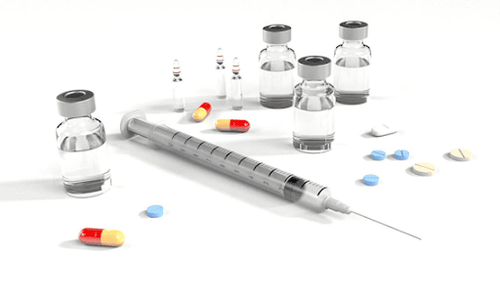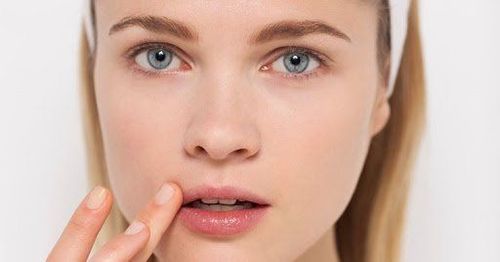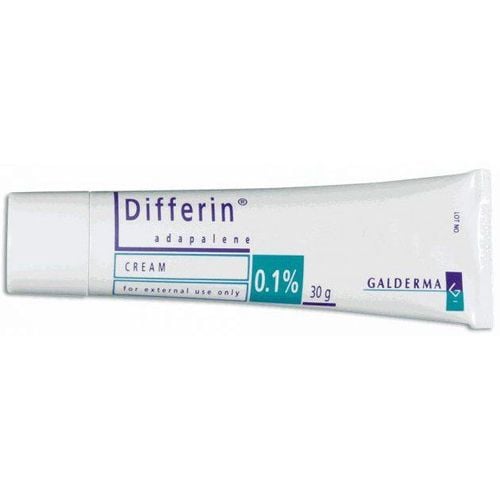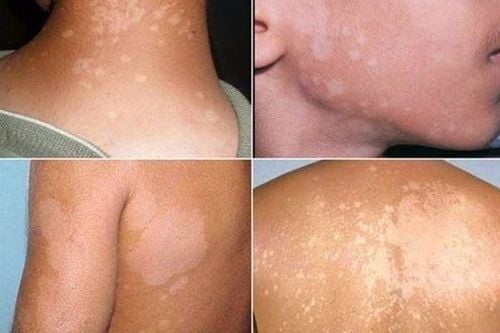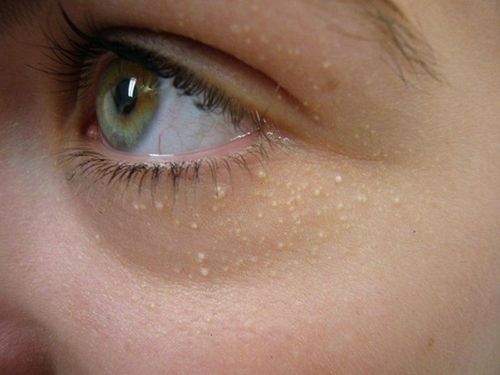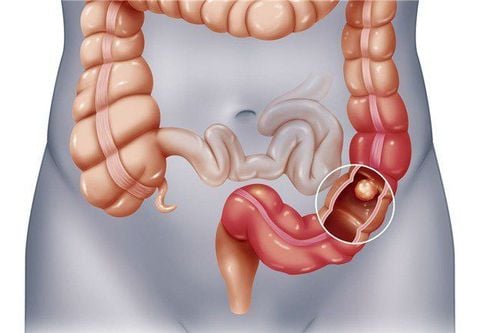This is an automatically translated article.
Treatment of warts on the face is not always successful and not all cases require treatment. Treating warts on the face itself can cause problems, such as pain, infection, and scarring. Accordingly, depending on the characteristics of each lesion, its location and size are important, and different treatment methods are selected.1. Overview of the treatment of rice grains on the face
In the majority of cases, warts on the face are self-limited. An intact immune system plays the most important role in preventing HPV infection. This can be seen to be distinct in patients with primary immunodeficiency or in immunosuppressed patients.On the other hand, facial warts caused by HPV are the most common skin disorder in organ transplant recipients. If the appearance of rice grains on the face in children can be suspected, primary immunodeficiency may be suspected.
The guidelines for the treatment of warts on the face clearly state the goal of the treatment as follows:
Remove the warts on the face without recurrence Treatment does not leave scars The immunity created by the treatment must be constant Accordingly, the general principles to be followed in the treatment of warts on the face are: It is not necessary to treat all lesions The indications for treatment are when lesions cause pain, interfere with function, affect cosmetic benefits and risk of malignancy All treatments have low success rates. Immune response is often essential to limit disease Younger people with a shorter duration of illness tend to have a lower rate of disease. The highest cure rates for different treatments.
2. Methods to treat warts on the face
2.1 Destructive therapy ProcedureFacial wart removal is a widely performed procedure. The success rate is 65–85% with the procedure, but the recurrence and scarring rates are high (30%).
Therefore, the excision procedure is performed only initially to limit scarring and then will be combined with other forms of intervention.
Salicylic acid
The role of salicylic acid has a horny effect, reducing the thickness of warts on the face; however can also stimulate an inflammatory response.
Over-the-counter preparations are available as diluted 17% salicylic acid or as a patch. The advantage of this method is that it is inexpensive, convenient and reasonably effective, causing negligible pain. However, the limitation encountered is that the results obtained require weeks to months after treatment. Occasionally, contact dermatitis may result from topical application of salicylic acid, and to avoid systemic toxicity, topical application should be limited to a limited number of areas.
Results of salicylic acid therapy are dependent on patient compliance. Before applying the medicine, soak the skin in warm water for about 5 minutes and apply it when the lesion is dry.
Chemical burning of the skin
Strong chemicals can destroy tissue. Trichloroacetic acid and bichloroacetic acid destroy warts by denaturing and destroying proteins in the cells.
Therefore, chemical treatment with a 60–90% solution of trichloroacetic acid is most effective when treating small, moist facial warts. 70% of patients treated with trichloroacetic acid up to 6 times were completely cured.
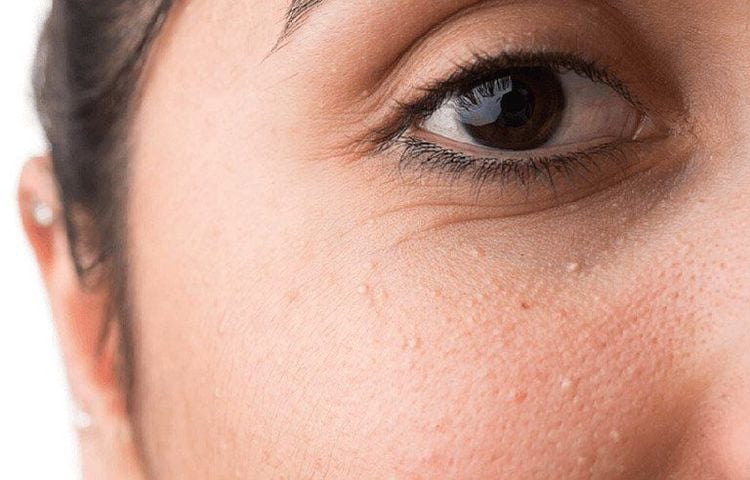
Hạt cơm trên mặt không nguy hiểm nhưng gây mất thẩm mỹ
Cantharidin is a substance secreted by an insect, which is absorbed by lipids in the keratinocytes, activates serine proteases and leads to the breakdown of the stratum corneum of the skin.
Depending on the amount, concentration, time of contact with the drug, the wart on the face will form a blister in the epidermis and will disappear within a week, less risk of scarring, achieving results better aesthetics.
Phenol (carbobolic acid)
This is a strong caustic substance that can penetrate deep into tissue, creating a chemical burn with escher, and is not routinely used to treat common warts.
Strong solution of phenol (80%) for the treatment of warts is effective and must be used by a doctor, not for extensive use.
Retinoic acid
Topical tretinoin, although currently recommended for the treatment of acne, has also been reported to be beneficial in the treatment of flat facial warts.
2.2. Photodynamic therapy Photodynamic therapy with topical 5-aminolevulinic acid has a good therapeutic effect, especially for superficial and recurrent warts.
The mechanism of action is still unclear but selective photothermolysis of oxyhaemoglobin in the dilated microvasculature of the wart leads to destruction of the microcapillaries followed by a reduction in the size of the lesion.
Many factors influence the effectiveness of photodynamic therapy, including photosensitive concentration; solvent type; incubation period; type, dose and duration of light irradiation; and the area of the contact parts.
Cryotherapy
Cryotherapy induces cryotherapy on skin lesions.
The mechanism of treatment of facial warts is by simple necrotic destruction of HPV-infected keratinocytes or possibly by local inflammation leading to the formation of a cell-mediated response.
Radiofrequency ablation
Local heating with radiofrequency heat generators and radiofrequency electrosurgical excision have been successfully used to treat facial warts.
Infrared coagulation
An instrument that generates uncoherent infrared light with a 400–2700 nm spectrum has been reported as a cheaper, safer and easier to handle alternative CO2 laser treatment for wart-like skin lesions.
The direct application of an infrared contact coagulant induces thermal injury at a depth that is dependent on the duration of the exposure and can protect the wound from infection as well as reduce the recurrence rate.
Laser therapy
Energy from laser light is absorbed by tissue water and leads to non-selective thermal tissue destruction.
Therefore, the focused laser beam is used as a scalpel to cut the skin lesions caused by the wart to the subcutaneous tissue, followed by the root which is also evaporated by a non-convergent beam. until a clean surgical field is obtained.
The response rate ranges from 50 to 100%. Usually, laser ablation will initially follow the focused mode, followed by steam and hemostasis with the non-concentrated mode. If the wart is deeper, more intervention is needed.
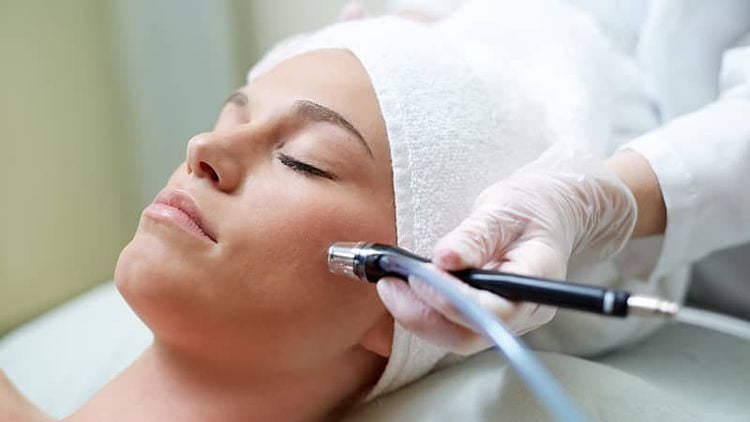
Điều trị mụn cơm trên mặt bằng laser để phá hủy mô mụn
Glutaraldehyde is a tissue fixative that polymerizes keratin. The effectiveness of this agent lies in the desiccation of surface virions and, as a result, a reduction in antigenic load. Although the mechanism of action of glutaraldehyde on facial warts has not been precisely elucidated, this therapy is still being applied with relatively positive results, especially in drug-resistant lesions.
Formaldehyde
Formalin (formaldehyde) is a virucidal agent and has strong antiseptic properties that work by causing damage to the upper layers of the epidermal cells that contain the virus, thereby killing the virus.
Formalin application was effective in 83.3% of patients, but complete disappearance of warts was limited. The most common side effects of formalin that may be experienced are redness, irritation, and dryness of the skin.
Acyclovir, valacyclovir and other antiretrovirals
Oral antivirals are not the usual modality of treatment but there are isolated case reports of improvement of wart lesions following oral treatment with these agents.
2.4 Anti-mitotic therapy Bleomycin
Bleomycin is a chemotherapeutic agent with antitumor, antibacterial, and antiviral activity. Thereby, the drug causes acute tissue necrosis and can stimulate an immune response, helping to treat skin warts, especially in immunosuppressed kidney transplant patients.
Side effects include pain and burning on injection, erythema, swelling, and pain within 24-72 hours of injection prior to formation of a black thrombus. A local complication after perioral injection is depigmentation or dystrophy.
Podophyllotoxin
Podophyllotoxin is a topical antimitotic and is available as a 0.5% solution. Podophyllotoxin binds to microtubules and induces mitotic arrest during supermitosis, which helps limit the spread of wart lesions.
2.5 Immunotherapy This treatment uses the patient's own immune system to fight the wart. Some types of immunotherapy only target certain cells, while others can affect the immune system as a whole.
Due to limitations of conventional procedures and high risk of recurrence, immunotherapy is becoming increasingly popular, especially in the treatment of warts on the face and genitals.
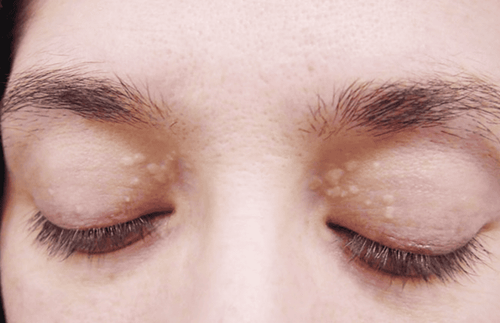
Điều trị mụn cơm trên mặt giúp cải thiện triệu chứng
The components of garlic have been shown to have antiviral activity and inhibit the cell proliferation of virus-infected cells, resulting in a clear and less re-bleeding skin. more broadcast.
Applying a mixture made of baking powder and castor oil is an age-old treatment technique for warts.
Herbal preparations such as Echinacea and propolis are reported to enhance immunity when taken orally, act as immunomodulators, and improve warts.
Glycyrrhizic acid, obtained from the root of the Glycyrrhiza glabra plant, has antiviral, anti-inflammatory and anti-inflammatory properties. When used with an immunostimulant, this agent was shown to be more effective than podophyllin. Even more, glycyrrhizic acid is a safe and effective treatment for managing warts during pregnancy.
In summary, warts on the face are a pathological condition caused by the benign proliferation of epidermal cells in the skin and mucous membranes caused by HPV. To date, treatments for facial warts have mainly only improved symptoms through destruction of the lesion. Because of the high probability of recurrence as well as possible risks, patients need to be consulted carefully before choosing any therapy.
If you have a need for consultation and examination at Vinmec Hospitals under the national health system, please book an appointment on the website (vinmec.com) for service.
Please dial HOTLINE for more information or register for an appointment HERE. Download MyVinmec app to make appointments faster and to manage your bookings easily.
Reference source: Ministry of Health



